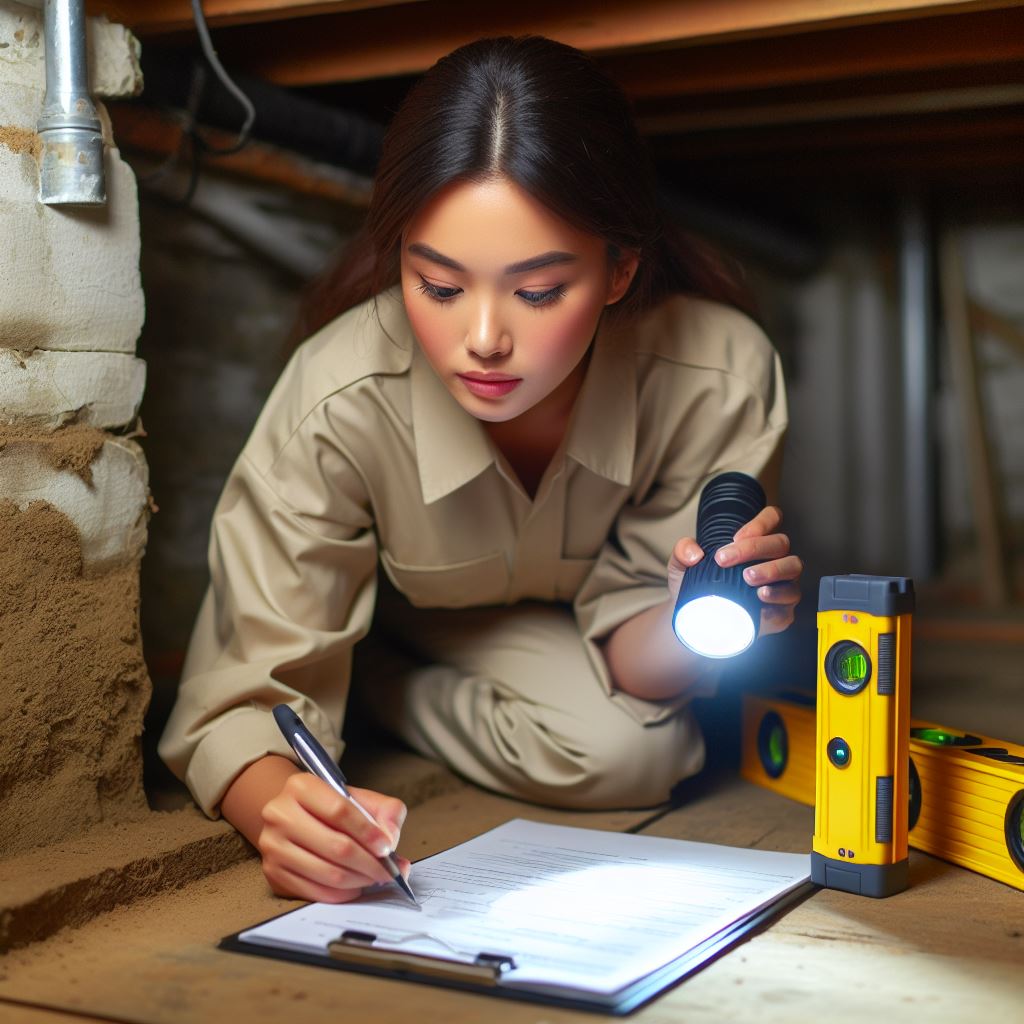Common Defects Found During Home Inspections
The process of buying a house can be both exciting and overwhelming. One of the most crucial steps in this process is the home inspection. A home inspection is a thorough examination of the property to identify any defects or issues that may affect its value or safety. While there are many potential defects that can be found during a home inspection, one of the most important ones is the structural integrity of the house.
Structural defects can have a significant impact on the safety and stability of a house. These defects can range from minor issues, such as cracks in the walls or floors, to more serious problems, such as foundation issues or roof damage. Identifying and addressing these defects is essential to ensure the long-term durability and safety of the property.
During a home inspection, the inspector will carefully examine the foundation of the house. They will look for any signs of cracking, shifting, or settling. These issues can indicate problems with the foundation, such as poor construction or water damage. If left unaddressed, foundation problems can lead to structural instability and costly repairs in the future.

In addition to the foundation, the inspector will also inspect the walls and floors of the house. They will look for any cracks, bulges, or unevenness. These issues can be signs of structural problems, such as shifting or settling. The inspector will also check for signs of water damage, which can weaken the structure of the house over time.
Another common defect found during home inspections is roof damage. The roof is one of the most important components of a house, as it protects the interior from the elements. During the inspection, the inspector will carefully examine the roof for any signs of damage, such as missing or broken shingles, leaks, or sagging. Roof damage can lead to water infiltration, which can cause extensive damage to the interior of the house and compromise its structural integrity.
Electrical and plumbing defects are also common findings during home inspections. These defects can range from minor issues, such as faulty outlets or leaky faucets, to more serious problems, such as outdated wiring or plumbing systems. Electrical and plumbing defects can pose safety hazards and may require costly repairs or upgrades.
In addition to these common defects, the home inspector will also check for other issues, such as HVAC problems, insulation deficiencies, and pest infestations. While these defects may not directly affect the structural integrity of the house, they can still have a significant impact on its value and livability.
In conclusion, a home inspection is a crucial step in the home buying process. It allows potential buyers to identify any defects or issues that may affect the value or safety of the property. While there are many potential defects that can be found during a home inspection, one of the most important ones is the structural integrity of the house. Identifying and addressing structural defects is essential to ensure the long-term durability and safety of the property. In addition to structural issues, the home inspector will also check for other common defects, such as roof damage, electrical and plumbing problems, and HVAC issues. By thoroughly inspecting the house, potential buyers can make informed decisions and negotiate repairs or price adjustments if necessary.
How to Identify and Address Structural Defects in a House
The process of buying a house can be both exciting and overwhelming. One of the most crucial aspects of this process is inspecting the house for any structural defects. Identifying and addressing these defects is essential to ensure the safety and longevity of the property. In this article, we will discuss the most important defect that can be found by inspecting the house and how to address it.
When inspecting a house, one of the most critical defects to look out for is foundation issues. The foundation is the base on which the entire structure rests, and any problems with it can have severe consequences. Signs of foundation issues include cracks in the walls or floors, doors and windows that do not close properly, and uneven floors. These issues can indicate that the foundation has shifted or settled, which can lead to structural instability.

If you suspect foundation issues, it is crucial to address them promptly. Ignoring these problems can result in further damage to the house and potentially costly repairs down the line. The first step in addressing foundation issues is to hire a professional structural engineer or foundation specialist. They will conduct a thorough inspection of the property and provide a detailed report on the extent of the damage and the necessary repairs.
Depending on the severity of the foundation issues, there are several methods to address them. One common solution is underpinning, which involves strengthening the foundation by adding additional support. This can be done by installing steel piers or helical piles to stabilize the foundation and prevent further movement. Another method is slabjacking, which involves injecting a grout mixture under the foundation to lift it back into place.
In addition to foundation issues, it is also important to inspect the house for other structural defects. These can include problems with the roof, walls, and floors. Signs of roof issues include missing or damaged shingles, sagging or leaking ceilings, and water stains. These problems can lead to water damage and mold growth if not addressed promptly.
Walls and floors should also be inspected for any signs of structural defects. Cracks in the walls can indicate foundation issues, while cracks in the floors can be a sign of settling or poor construction. It is important to determine the cause of these cracks and address them accordingly to prevent further damage.
Addressing structural defects in a house can be a complex and costly process. However, it is essential to prioritize these repairs to ensure the safety and longevity of the property. Hiring a professional inspector or engineer is crucial to accurately identify and assess these defects. They will provide expert advice on the necessary repairs and help you make informed decisions.
In conclusion, when inspecting a house for structural defects, the most important issue to look out for is foundation problems. These issues can have severe consequences and should be addressed promptly. Hiring a professional to conduct a thorough inspection and provide expert advice is crucial. By addressing these defects, you can ensure the safety and longevity of your new home.
The Impact of Electrical Defects on Home Safety
The safety of a home is of utmost importance to homeowners and their families. One crucial aspect of home safety is the electrical system. Electrical defects can pose serious risks, including the potential for fires and electrical shocks. Therefore, it is essential to inspect the house thoroughly to identify any electrical defects that may compromise the safety of the occupants.
Electrical defects can manifest in various ways, and their impact on home safety cannot be underestimated. One common defect is faulty wiring. Over time, wiring can deteriorate due to wear and tear, leading to exposed wires or loose connections. These defects can increase the risk of electrical fires, as sparks or overheating can occur. Additionally, faulty wiring can cause power surges, damaging appliances and electronics. Therefore, it is crucial to inspect the wiring system to identify any defects and address them promptly.
Another significant electrical defect that can impact home safety is outdated electrical panels. Older homes may still have outdated fuse boxes or electrical panels that are not equipped to handle the electrical demands of modern appliances and electronics. These outdated panels can lead to overloaded circuits, increasing the risk of electrical fires. Upgrading to a modern electrical panel with circuit breakers is essential to ensure the safe distribution of electricity throughout the house.
Inadequate grounding is another electrical defect that can compromise home safety. Grounding is a safety measure that directs excess electrical current into the ground, preventing electrical shocks. Without proper grounding, electrical faults can result in shocks that can be fatal. Therefore, it is crucial to inspect the grounding system of a house to ensure its effectiveness and make any necessary repairs or upgrades.
Electrical defects can also be found in the outlets and switches throughout the house. Loose outlets or switches can pose a risk of electrical shocks or fires. Additionally, outdated outlets may lack the necessary safety features, such as ground fault circuit interrupters (GFCIs) or arc fault circuit interrupters (AFCIs), which protect against electrical shocks and fires, respectively. Inspecting and upgrading these outlets and switches is essential to maintain home safety.
Furthermore, electrical defects can be present in the lighting fixtures of a house. Faulty wiring or improper installation can lead to flickering lights, overheating fixtures, or even electrical fires. Regular inspection of lighting fixtures is necessary to identify any defects and address them promptly.
In conclusion, electrical defects can have a significant impact on home safety. Faulty wiring, outdated electrical panels, inadequate grounding, and defective outlets, switches, and lighting fixtures can all pose serious risks to homeowners and their families. Therefore, it is crucial to inspect the house thoroughly to identify any electrical defects and address them promptly. Regular maintenance and upgrades to the electrical system are essential to ensure the safe distribution of electricity and minimize the risk of electrical fires and shocks. By prioritizing the inspection and maintenance of the electrical system, homeowners can create a safe living environment for themselves and their loved ones.
Plumbing Defects: Signs, Risks, and Solutions
Plumbing Defects: Signs, Risks, and Solutions
When inspecting a house, one of the most crucial aspects to examine is the plumbing system. Plumbing defects can lead to a range of issues, from minor inconveniences to significant health and safety risks. Therefore, it is essential to be aware of the signs of plumbing defects, understand the potential risks they pose, and know the appropriate solutions to address them.
One common sign of plumbing defects is water leaks. Leaks can occur in various areas, such as faucets, pipes, or toilets. They are often indicated by the presence of water stains, dampness, or mold growth. While a small leak may seem insignificant, it can lead to significant water damage over time. Additionally, leaks can contribute to the growth of mold and mildew, which can pose health risks, particularly for individuals with respiratory conditions. To address water leaks, it is crucial to identify their source and repair or replace the affected components promptly.
Another sign of plumbing defects is low water pressure. If you notice a decrease in water flow from your faucets or showerheads, it may indicate an underlying issue with the plumbing system. Low water pressure can be caused by various factors, including clogged pipes, mineral deposits, or faulty valves. In some cases, it may be a symptom of a more significant problem, such as a leak or a damaged water main. To resolve low water pressure, it is necessary to identify the cause and take appropriate measures, such as cleaning or replacing clogged pipes or fixtures.
Clogged drains are another common plumbing defect that homeowners may encounter. A clogged drain can result in slow drainage or complete blockage, causing inconvenience and potential damage. Clogs can occur due to the accumulation of debris, such as hair, soap scum, or food particles. In some cases, clogs may be caused by more severe issues, such as tree root intrusion or damaged pipes. To address clogged drains, various solutions can be employed, including using a plunger, drain snake, or chemical drain cleaner. However, it is important to exercise caution when using chemical drain cleaners, as they can be harmful to both the plumbing system and the environment.
In addition to these signs, plumbing defects can also pose health and safety risks. For instance, faulty or outdated plumbing systems can lead to contaminated water. This can occur due to the presence of lead pipes, corroded plumbing materials, or cross-connections between potable and non-potable water sources. Consuming contaminated water can result in various health issues, including gastrointestinal problems, skin irritations, or even lead poisoning. To mitigate these risks, it is crucial to have the water quality tested regularly and address any plumbing defects that may contribute to contamination.
In conclusion, inspecting the plumbing system is of utmost importance when evaluating a house. Plumbing defects can manifest in various ways, such as water leaks, low water pressure, or clogged drains. These defects not only cause inconvenience but can also pose health and safety risks. Therefore, it is essential to be vigilant in identifying signs of plumbing defects and taking appropriate measures to address them promptly. By doing so, homeowners can ensure the functionality, safety, and longevity of their plumbing systems.




